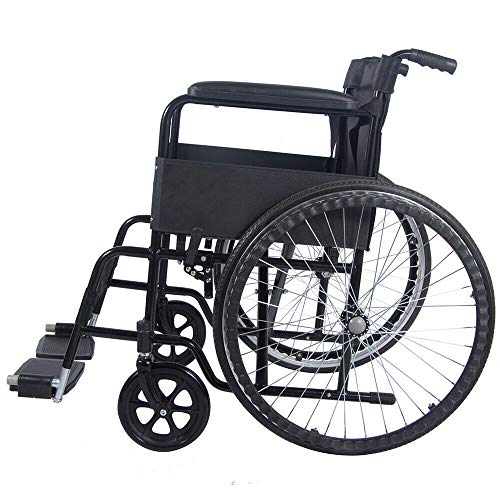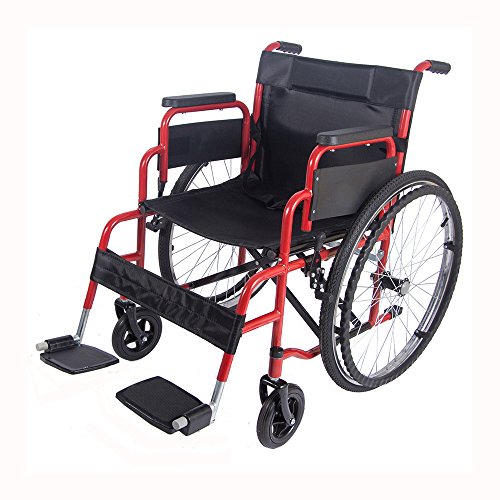You'll Be Unable To Guess How To Use A Self Propelled Wheelchair's Ben…
페이지 정보

본문
 How to Use a Self Propelled Wheelchair
How to Use a Self Propelled WheelchairWheelchairs provide mobility and independence for people with limited walking abilities. It is important that you know how to self propel a wheelchair to use your wheelchair, and have an occupational therapist or doctor help you in this.
 Many people maneuver their wheelchairs using a technique known as "wheelies". The user must have big hands to be able extend the rims of the wheelchair, and grip strength to propel the wheelchair forward.
Many people maneuver their wheelchairs using a technique known as "wheelies". The user must have big hands to be able extend the rims of the wheelchair, and grip strength to propel the wheelchair forward.Seating Position
As the name implies, a power assisted self propelled wheelchair propelled wheelchair allows you to move around and not rely on others. For many, this is the key to regaining or maintaining their independence. It also reduces the risk of injury to both the wheelchair user and others in the vicinity.
The person using the wheelchair must be comfortable in the chair. There are a variety of ways to ensure this. First, the footplates should be placed in the proper position. Lift the latch for the footrests and swing the footrests around so they are facing the chair. Make sure that the wheelchair user's feet are placed comfortably on the footplates.
The footrest height may need lowering, especially for users who are hemiplegic (one side of the body is more affected than the other). The footrests can increase the pressure on the bone of the seat and cause pain and discomfort if they are too high.
A forehead strap can be used self propelled wheelchair to help keep the user of a wheelchair upright especially if they suffer from weakness of the neck muscles. These can be fitted by a mobility specialist and can be used with wheelchairs that don't have headrests.
It is crucial that if the wheelchair has armrests that they are placed in the correct position so that the user of the wheelchair does not strike them with their arms when they move. It is best to use an armrest that is removable or swing-away armrests for this purpose. You can also add foam inserts to the back of armrests to raise them up to an appropriate height.
A well-fitting wheelchair cushion is crucial, especially if a wheelchair user is at a high risk of skin breakdown or pressure sores. This is because pressure ulcers result from friction between the skin and the surfaces of a wheelchair. In certain instances blisters and skin irritation may occur after sitting in a single position for a long time. Repositioning the chair regularly can reduce the chance of pressure ulcers.
Pushing
Self-propelled wheelchairs allow users to move independently, without the need for someone to push them. They are a lot easier to maneuver than other wheelchairs due to the fact that they have larger rear wheels and push handles fitted on them. They can travel on many surfaces without fearing of slipping over obstacles or getting stuck.
Be careful not to grip your chair handle too tightly as you move forward. Using too much pressure could cause your hands to cramp and decrease the amount of force you can apply. You can also use gloves for wheelchairs or handrim covers that have grip materials in the palms. This will help improve the hand's position and increase the amount of force you can apply.
Keep the front casters free of any debris, like rocks or sticks. This can make it difficult to maneuver your wheelchair as you think. It could cause an increase in control or injuries. If your seat-to-floor height is extremely high, you may think about adding extra padding to the front casters.
It is recommended that a caregiver pushes the wheelchair to assist you climb a steep hill or just a tiny step. If you'd like to do this on your own, you'll need more training and practice under the supervision of a health professional. It is crucial to place the wheelchair perpendicularly (directly) in front of the curb or with small steps and position the front tires just before the edge.
It is crucial to have enough space in the front of you when going up the hill. This will keep you from running into other people. If you don't have clear space ahead of you, you will accelerate quickly and might hit other people. To help you avoid this, try to be aware of people in the vicinity when you are on a slope. Also, have a caregiver or a friend waiting to catch you in the event that you begin to fall out of your wheelchair.
Braking
A self-propelled chair requires the user to operate the braking and guiding actions in a particular way to ensure that the chair is safe to use. This is particularly crucial when on a slope, as it is possible for the centre of gravity to move forward in the event that the braking mechanism is not performed in a controlled way.
When pushing a wheelchair always ensure that your hand is in the correct position, ideally at ten hours (10:00) on the wheel and released at two hours (2:00). This will ensure that the majority (or weight) of the body is over the rear wheels, making it easier to push. It also helps to maintain the integrity of shoulder the elbow, wrist and wrist joint.
To turn right in a wheelchair, move forward on the right hand rim and then pull back the left rim. This will turn the wheelchair to the right so that you can remain sitting. Wheelchairs can also be equipped with anti-tip bars that prevent the chair from tipping backwards.
Always consult the user guide included with your wheelchair to determine the safest slope your chair is able to traverse. In some instances the wheelchair might need to be temporarily dismounted and operated with a hand to overcome steep slopes. If this is the case it is recommended to seek the assistance of a friend or relative and follow the procedure outlined in the User Guide.
When traversing kerb stones, it is recommended to take off and remount your vehicle via ramps as often as you can. This will reduce the amount of pressure required on the front and rear tyres, allowing you to travel over the kerb with greater speed. The kerb climber option available on many manual wheelchairs can assist with this process by increasing the capacity of the wheelchair by about 10cm (4").
To stop a wheelchair, move the joystick towards you to release the motor, and then release the brakes. The wheelchair will stop and you can remove the footrests and prepare walking aids prior to leaving the chair.
Steering
The user is the one responsible for steering and controlling the wheelchair. There are numerous ways to do this, dependent on the structure of the wheelchair and add-ons such as armrests or phone/drink holders. Wheelchairs vary in design and size, as well as weight. The size of the front casters of a wheelchair can determine the terrain it can handle. Small casters allow a chair to move faster, but they struggle on rough surfaces like cobblestone or grass. Large casters will allow wheelchairs to travel on rough surfaces, but they isn't as fast.
The wheelchair user should use both hands on smooth flat surfaces to keep momentum. This can be done by gripping the rims of the hand and pushing with both hands. The hands shouldn't be wrapped around the hand rims in order to avoid injuries and cause over-corrections (fish-tailing) as the chair turns a corner. It is also recommended that the wheelchair user test leaning forward and backwards to different extents to determine an optimal balance between leaning and control.
The person using a wheelchair must anticipate obstacles and plan ahead for all terrain self propelled wheelchair that is more challenging. It is crucial that the user of the wheelchair looks over their shoulders frequently to prevent running into objects or other people. Also, when they travel with a caregiver, they should make sure that they are prepared to assist when required. If the wheelchair will be used on a steep slope, the caregiver should assist or drive it until the user is comfortable with the.
To turn to turn, the user pulls one hand's rim back while pushing the other rim forwards. The wheelchair user must practice this on smooth flat ground before attempting it on a different surface because the movement could be uncomfortable and the chair could easily slide over if the technique isn't mastered. The wheelchair's power assisted self propelled wheelchair wheels can help ease the pressure on the user, and make turning easier. It is essential to be aware that strangers who are not trained tend to force wheelchair users against their will. The user of the wheelchair should cover the handles or fold them inwards.
- 이전글11 "Faux Pas" That Are Actually Okay To Make With Your Walking Pad Standing Desk 24.11.20
- 다음글Ten Things You Learned In Kindergarden That Will Help You Get Used Mobility Scooters For Sale Near Me 24.11.20
댓글목록
등록된 댓글이 없습니다.


